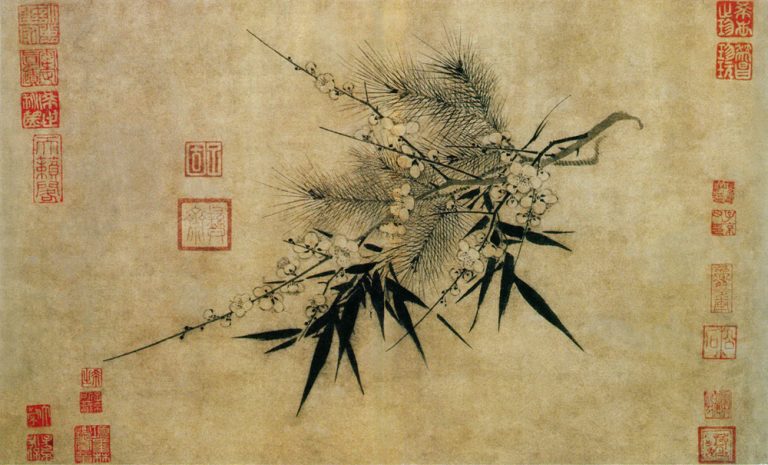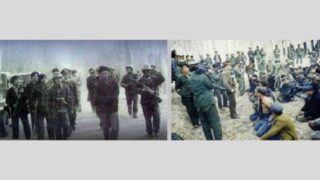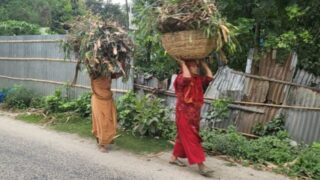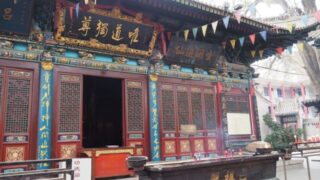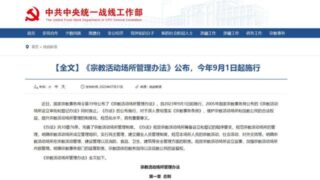From crosses on graves to traditional Buddhist and Taoist attire and even signboards of martial art schools—all religious symbols and names ordered to be removed.
by Tang Zhe
During the Cultural Revolution, anything even slightly related to religion was suppressed as one of the “Four Olds” — old customs, old culture, old habits, and old ideas. Monks and nuns were forced to resume secular lives, religious statues and symbols destroyed, and businesses with religious names ordered to change them. In the past two years, the CCP’s crackdowns on religions remind older generations in China of repressions imposed during the rule Mao Zedong.
Taoist priests forced to cut traditional hair buns
The grey-haired Taoist priest from Xi’an city in the northwestern province of Shaanxi no longer has his hair bun, traditionally worn by Taoist masters. The hairstyle is jokingly called “cow nose” for its resemblance to the nose of a cow. The elderly man said that local government officials started forcing all Taoist priests who don’t have state-issued certificates to cut their hair buns.


More and more Buddhist monks and Taoist priests across China are expelled from monasteries and temples, forced to return to secular life. A Taoist priest from Baofeng county in Henan Province’s Pingdingshan city told Bitter Winter that in April last year, officials shut down the Taoist temple where he lived. They claimed that it was “set up illegally, and religious activities were conducted without permission.” The priest was told to take off his traditional robe, cut his hair, and leave the temple to resume secular life. He has been a priest for most of his life and had nowhere else to live.




Martial arts schools’ signboards rectified
According to a government employee from Henan’s Dengfeng city, the central religious work inspection team demanded to secularize all martial arts schools in the jurisdiction last year. As a result, over 20 schools were forced to drop religion-related words from their names, and all students had to change their Buddhist monks’ attire into sportswear.
The Shaolin Temple, famous for its martial arts, ignited a boom of learning martial arts across China and the world due to a series of videos related to Shaolin Temple. Because of its popularity, many martial arts schools started including Shaolin Temple into their names. After the new Regulations on Religious Affairs took effect in 2018, these schools were forced to change their names.
The “Songshan Shaolin Temple Warrior Monks Training Base” in Dengfeng had to change its name into “Shaolin Yanlu Martial Arts School.” “The change of the school name is our school’s strategic measure after assessing the situation,” a school-issued notice says, promising “to comprehensively implement all measures to prevent religions from infiltrating our school.”
“Our coach told us not to wear Buddha beads, earrings, or necklaces, and not to use words like God, Buddha, temple, monk, lest our careless talk leads to trouble,” a martial arts school student told Bitter Winter. “Some of my schoolmates were physically punished because their clothing bore the word ‘temple.’”
Memorial plaques and tombstones with crosses demolished
On February 22, 2019, government officials from Ningling county’s Kongji township in Henan’s Shangqiu city used an excavator to dump into a river a memorial plaque dedicated to Liu Anshan, a late local Christian doctor. The plate, made ten years ago by his patients, had a red cross and Chinese characters for “God loves the world” on it. The officials said that the plaque had to be removed because “religious symbols were displayed in a public place.”


“Even dead Christians are not spared,” a resident said indignantly. “This is a recurrence of the Cultural Revolution.”
On April 29 this year, 176 tombstones with crosses were demolished in a cemetery in Xiapu county administered by Ningde, a prefecture-level city in the southeastern province of Fujian. The incident has attracted media attention.
That day, over 60 personnel from the Songgang sub-district police station, the Civil Affairs Bureau, the Land Bureau, urban management, and other government departments took part in the demolition. No notice was issued beforehand, nor were the families of the deceased informed. The cemetery, called the “Holy Mountain,” spans a history of over 140 years. Thousands of people are laid to rest in the graveyard, and many Christians wish to be buried there. In May, more than 60 tombs were marked with serial numbers, indicating that they will too soon be demolished.
